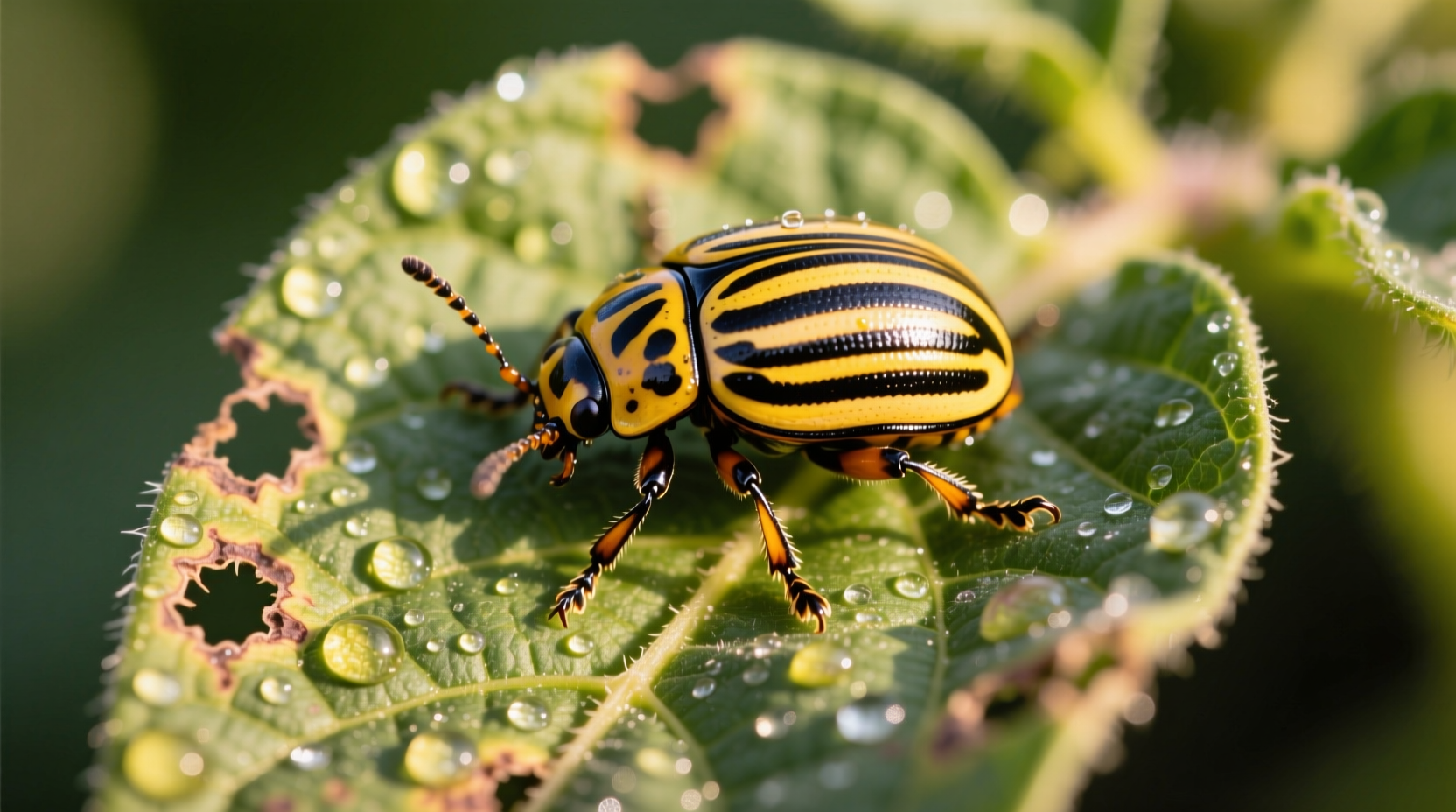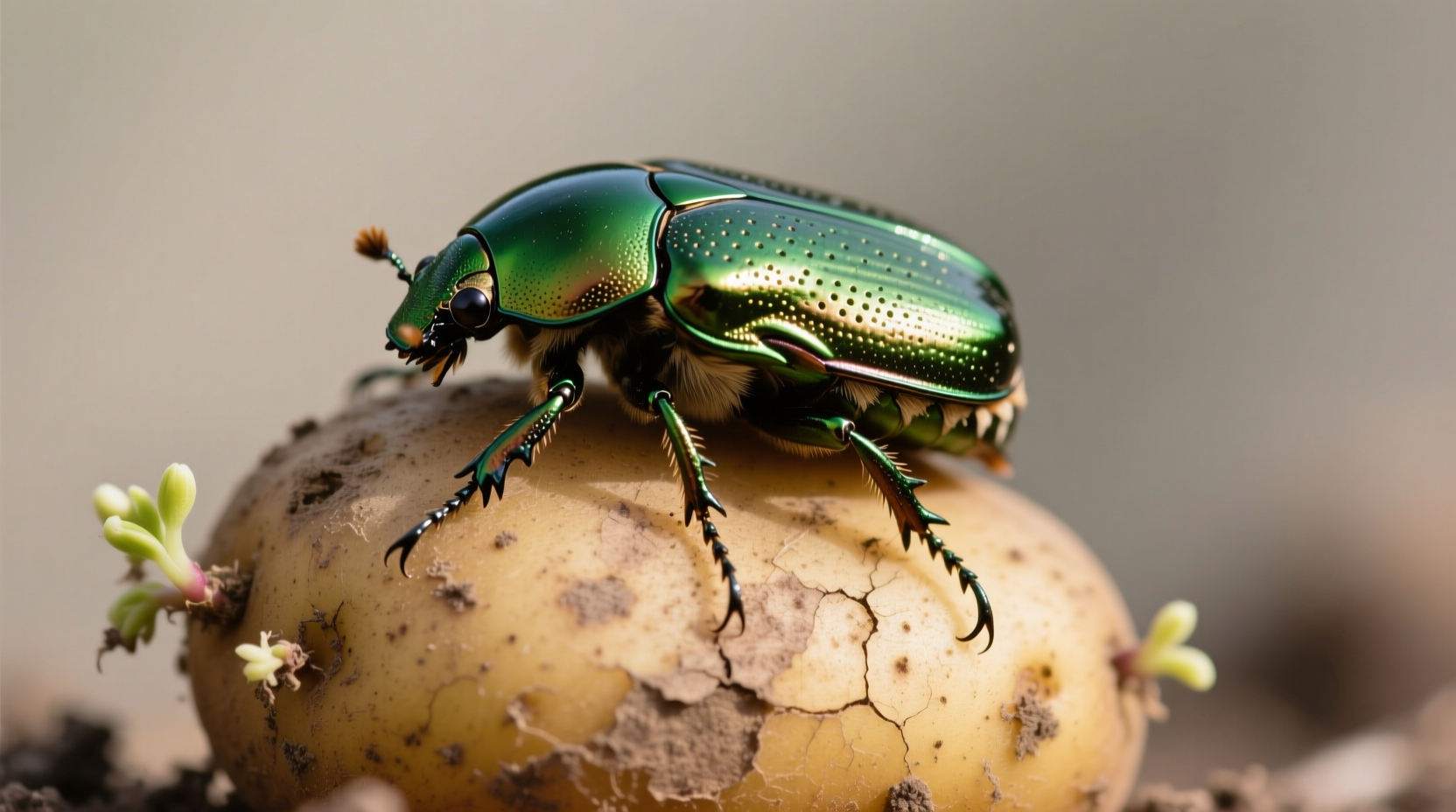When you spot yellow-orange beetles devouring your potato plants, you're likely facing the Colorado potato beetle—one of agriculture's most persistent pests. Understanding this insect's behavior and implementing timely control measures can save your entire harvest. This guide delivers actionable strategies backed by entomological research to help you protect your potato crops effectively.
Identifying the Colorado Potato Beetle: Key Characteristics
Correct identification is your first line of defense against this destructive pest. The Colorado potato beetle has distinctive features across its life stages:
- Adult beetles: 6-8mm long with yellow-orange bodies and 10 black stripes on their wing covers
- Eggs: Bright orange clusters of 10-30 laid on undersides of leaves
- Larvae: Reddish with black heads in early stages, becoming orange with black spots as they mature
- Pupae: Orange-red stage in the soil before emerging as adults
Distinguishing these beetles from similar-looking insects like ladybugs or false potato beetles is crucial. Unlike beneficial ladybugs, Colorado potato beetles have distinct stripes and feed exclusively on nightshade plants.
| Life Stage | Appearance | Duration | Damage Level |
|---|---|---|---|
| Egg | Bright orange clusters | 4-9 days | None |
| Larva (1st instar) | Reddish with black head | 2-3 days | Moderate |
| Larva (2nd-4th instar) | Orange with black spots | 10-14 days | Severe |
| Pupa | Orange-red in soil | 5-10 days | None |
| Adult | Yellow-orange with black stripes | 30+ days | Severe |
Understanding the Damage Timeline
The Colorado potato beetle's impact follows a predictable seasonal pattern that varies by climate zone. Recognizing this timeline helps implement timely interventions:
In northern regions, adult beetles emerge from soil in late spring (May-June) and immediately begin feeding. Females lay eggs within days of emergence, with larvae hatching 4-9 days later. The first generation larvae cause significant defoliation in early summer. In warmer climates, multiple generations can develop within a single growing season, with second and third generations appearing in mid to late summer.
According to USDA Agricultural Research Service data, a single female can lay 300-500 eggs during her lifetime, with populations potentially increasing tenfold each generation without control measures. This exponential growth explains why early detection is critical—waiting until you see severe damage often means the infestation is already out of control.

Effective Control Strategies by Growth Stage
Successful management requires matching control methods to the beetle's life cycle stage and your specific growing conditions. The most effective approach combines multiple strategies:
Preventive Measures
Prevention remains the most sustainable approach to managing Colorado potato beetles:
- Crop rotation: Rotate potatoes with non-host crops (grains, legumes) at least 200 yards from previous year's location
- Physical barriers: Use floating row covers immediately after planting
- Trap cropping: Plant early potato varieties as sacrificial crops to attract beetles away from main crop
- Soil management: Deep tillage in fall disrupts overwintering sites
Biological Control Options
Several natural predators and biological controls effectively reduce beetle populations:
- Beneficial insects: Ladybugs, lacewings, and spined soldier bugs prey on eggs and larvae
- Beauveria bassiana: A naturally occurring fungus that infects and kills beetles
- Bacillus thuringiensis var. tenebracis (Bt-t): A bacterial spray specifically targeting beetle larvae
- Parasitic wasps: Edovum puttleri targets beetle eggs
Chemical Control Considerations
When necessary, chemical controls should be used strategically to prevent resistance development:
- Rotate chemical classes: Alternate between neonicotinoids, spinosyns, and pyrethroids to prevent resistance
- Target application timing: Focus on newly hatched larvae which are most vulnerable
- Spot treatment: Treat only infested areas rather than entire fields
- Follow label instructions: Strictly adhere to application rates and safety precautions
Research from Cornell University's College of Agriculture and Life Sciences shows that Colorado potato beetles have developed resistance to over 50 different insecticides since the 1950s. This resistance develops rapidly—sometimes within just 2-3 years of a new chemical's introduction—making integrated pest management essential.
Regional Management Considerations
Effective control strategies vary significantly by region due to climate differences and local beetle populations:
- Northern climates: Focus on preventing overwintering adults through fall tillage
- Southern climates: Multiple generations require continuous monitoring throughout growing season
- Organic operations: Prioritize biological controls and physical removal methods
- Home gardens: Hand-picking remains highly effective for small plantings
The University of Minnesota Extension notes that in northern states, the first generation typically causes the most damage because it emerges when plants are small and vulnerable. In southern states, later generations often cause more severe damage due to higher population densities.
When to Seek Professional Help
While most home gardeners can manage small infestations, commercial growers should consider professional assistance when:
- Defoliation exceeds 20% before tuber formation
- Multiple insecticide applications show diminishing returns
- Beetles show resistance to standard control methods
- Infestation threatens entire crop viability
Local extension services provide free or low-cost identification and management recommendations tailored to your specific region. The USDA National Institute of Food and Agriculture maintains a directory of extension offices nationwide.











 浙公网安备
33010002000092号
浙公网安备
33010002000092号 浙B2-20120091-4
浙B2-20120091-4